I Am An Astrophysicist. Here’s What Stephen Hawking’s Final Paper Was Actually About
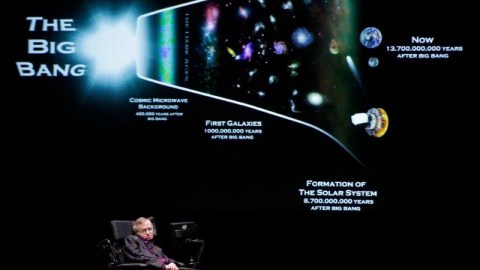
Spoiler: it isn’t the end of the Universe, and it’s not likely to lead to new evidence for the Multiverse, either.
On March 14, 2018, the most famous and celebrated scientist known to humanity, Stephen Hawking, died at the age of 76. He left a rich legacy behind in the fields of astrophysics and cosmology, sharing the wonders of the Universe with not only his colleagues but the general public as well. Best known for his work on black holes, general relativity, the topic of singularities, and the famous type of radiation that bears his name — Hawking radiation — his final legacy to humanity comes in the form of a scientific paper still under peer review. While the most important contributions Hawking made to theoretical physics happened in the early stages of his career, in the 1960s and 1970s, he continued to work on topics from the black hole information paradox to the firewall problem to the birth of space and time itself. His final paper, entitled A Smooth Exit from Eternal Inflation? (preprint here), focuses on the birth of the Universe as we know it.
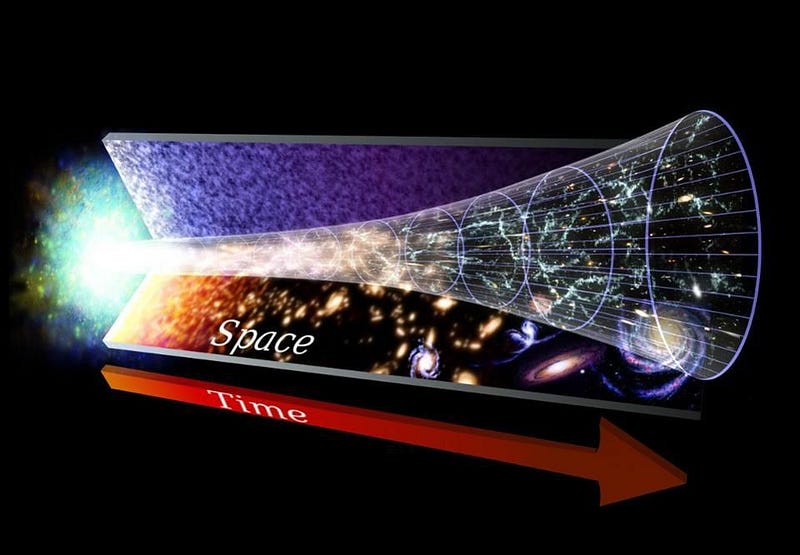
When it comes to how our Universe came to be, there are a few big questions we still don’t have answered. It’s generally accepted that the Universe we inhabit today, full of stars, galaxies, planets, and possibly a myriad of forms of life, arose from a hotter, denser, and more uniform state in the past. Because the fabric of space itself is expanding, and as it expands, it stretches the light inhabiting it to longer and colder wavelengths, it makes sense to conclude it was denser and hotter in the past. Because gravitation, over time, causes clumps of matter to grow, pulling additional matter into the densest regions, it makes sense to conclude the Universe was smoother and more uniform in the past. If you extrapolate back in time, you can imagine a time when there were not yet galaxies or even stars; when there were not yet neutral atoms; where there were not atomic nuclei. So far, there’s observational support for all of this. But if you extrapolate far enough, you’d arrive at an arbitrarily hot, dense state: a singularity.
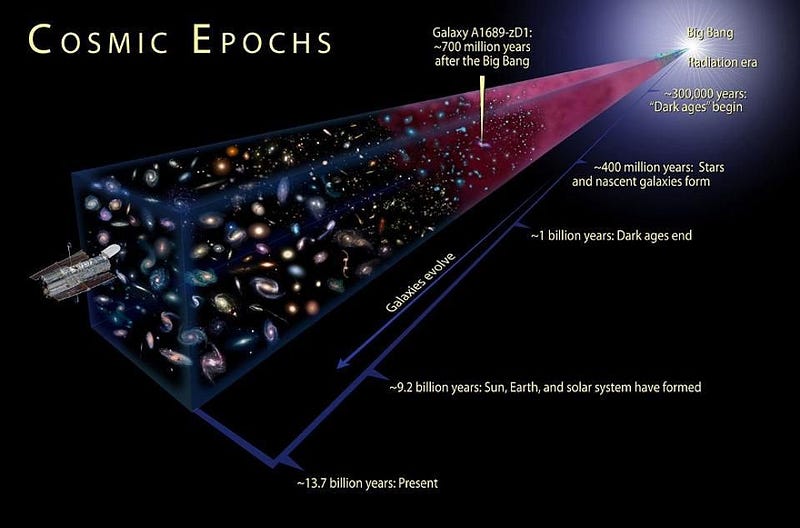
At least, that was the naive assumption that we made for a generation or two. By the late 1970s, it became clear that the Big Bang required us to start off with a set of initial conditions that were very specific, finely-tuned, and not-at-all well-motivated in order for us to obtain the Universe that we see. Either these were simply properties that the Universe was born with, or they arose from some pre-existing state that caused these conditions to come about. There was a way to obtain these initial conditions if the Universe underwent a period of cosmological inflation, where rather than matter and radiation, there were a form of energy that was intrinsic to the fabric of space. This vacuum energy, or field energy, needed to be coupled to the fabric of spacetime in a particular way, and would lead to a period where the fabric of space itself was stretched exponentially, for a long duration, creating a flat, uniform Universe devoid of high-energy particles.

This period of cosmic inflation turned out to explain a large number of observations, many of which hadn’t yet been made when inflation’s predictions were first calculated. It predicted a Universe with a specific spectrum and pattern of fluctuations, which would show up in the cosmic microwave background, in the large-scale structure of the Universe, and in a series of observable correlations. It predicted there would be an upper limit to the temperatures achieved in the hot Big Bang, and that there would be super-horizon fluctuations, on scales larger than the speed of light could have traveled since the moment of the Big Bang. The agreement between theory and observation has thus far been spectacular, confirming inflation wherever such observations can be made.
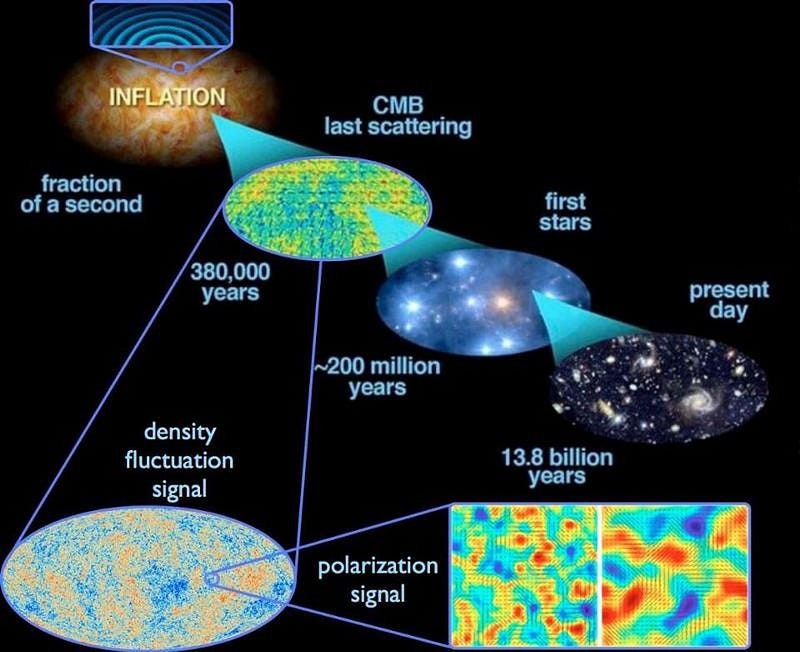
But there are some unsolved problems in inflation. First off, there’s the problem of how inflation began. It’s straightforward to show, as Borde, Guth, and Vilenkin did in 2001, that any particles that arise in an inflationary spacetime must have met some finite time in the past. In the language of relativity, an inflating spacetime is past-timeline incomplete. This theorem isn’t universal, meaning some models of inflation can potentially avoid a beginning to inflation. But where it applies, it indicates that inflation arose from a pre-existing condition, and therefore it implies the existence of a singularity. Stephen Hawking is an expert in singularity theorems, his no-boundary proposal with James Hartle is related to this very question, and throughout his life, he was (understandably) partial to spacetimes that do have a singular beginning.
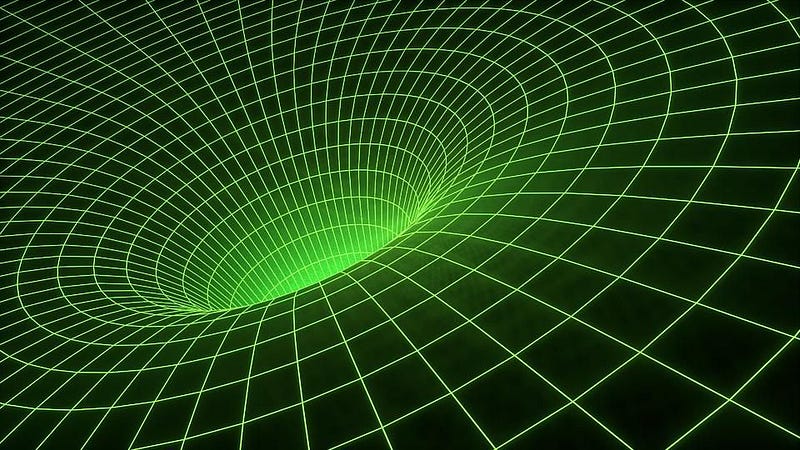
There’s also the problem of eternal inflation: once you start a region of spacetime inflating, it quickly out-expands everything else. If just 0.000001% of the Universe is inflating, then after approximately 10^–30 seconds, only one part in 10^300 isn’t inflating. There may be an arbitrarily large number of regions where inflation comes to an end, and gives rise to a hot Big Bang, but they will be forever separated by inflating space between them. The name eternal inflation comes about because once you start inflation, it continues arbitrarily far into the future, and it does so in most regions of space.
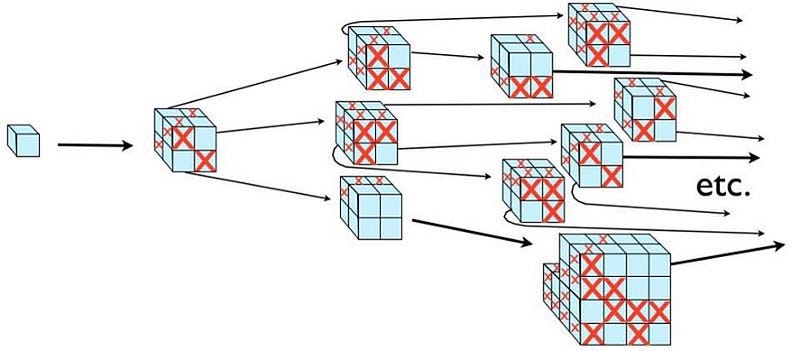
The attempt to understand:
- how inflation got its start,
- what conditions existed prior to the onset of inflation,
- what caused inflation to end where we are,
- what the likelihood of it ending in a particular region are,
- and whether it’s eternal, either to the future or the past,
are all active areas of research. Many top cosmologists and astrophysicists have published on this topic, and they do so by choosing a way to model this physical behavior, and deriving the consequences. Hawking’s final paper, coauthored with his former student Thomas Hertog, is another entry in the saga.

Here is, in a nutshell, what they do. They create a (deformed) conformal field theory that is mathematically equivalent (or dual) to an eternally inflating spacetime, and investigate some mathematical properties of that field theory. They look, in particular, at where the border of a spacetime that inflates for an eternity (forward in time) versus one that doesn’t, and choose that as the interesting problem to consider. They then look at the geometries that arise from this field theory, try to map that back onto our physically inflating Universe, and draw a conclusion from that. Based on what they find, they contend that the exit from inflation doesn’t give you something eternally inflating into the future, with disconnected pockets where hot Big Bangs occur, but rather that the exit is finite and smooth. In other words, it gives you a single Universe, not a series of disconnected Universes embedded in a larger multiverse.

That’s their paper. There are no observable consequences; there is nothing to measure; there is nothing to test. There’s no prediction about the end of the Universe, and there are no robust conclusions we can draw about its beginning. There are tremendous limitations to the implications of this work, and there are few compelling reasons to believe that their toy model has relevance for our physical Universe. It is a seed of an idea that itself is controversial, based off of an also-controversial foundation, and this is a very small step in its development. Furthermore, all of what they do is based on the Hartle-Hawking no-boundary conjecture, which is still not generally accepted as true. The authors go so far as to admit, in the discussion of this paper, that even within their toy model, they have not shown that there is a non-Multiverse-inducing exit to eternal inflation:
It therefore remains an open question whether the conjectured smoothness of global constant density surfaces impacts the eternity of eternal inflation.

The questions that they’re attempting to answer are still valid, open questions, and the best this paper can do — if it’s correct and relevant, and it may be neither — is provide suggestions towards an answer. The approach is largely based off of work that Hartle, Hawking, and Hertog have done in the past, the dS/CFT connection pioneered by Chris Hull and others, along with string-inspired work done by Andrew Strominger and his collaborators. None of this is based off of any realistic cosmological models; these are toy models that they are calculating in, and then reasoning-by-analogy with what we actually know exists. Like most theoretical work in the very early stages, there are interesting ideas that are presented, the work and calculations are highly speculative, and there is not necessarily a connection with reality. But there’s a non-zero chance that one is real. And in theoretical physics, a novel idea with a chance is worth infinitely more than no new ideas at all.

Regardless of how it all turns out, these fundamental questions will continue to delight, puzzle, and frustrate physicists as we search for the ultimate answers to the true nature of the Universe itself.
Ethan Siegel is the author of Beyond the Galaxy and Treknology. You can pre-order his third book, currently in development: the Encyclopaedia Cosmologica.





